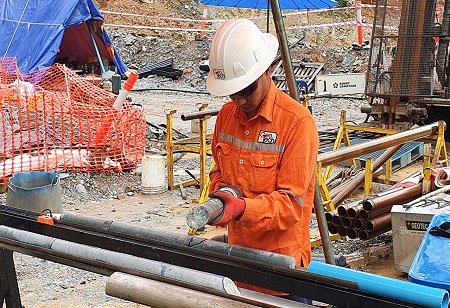
According to a recent report by Market.US, the global geotechnical engineering market is anticipated to reach USD 4.5 billion in 2032. The market is expected to grow as a result of factors like the restoration and preservation of historical sites, the growing acceptance of government-supported environmental policies and initiatives, rising environmental awareness, and a widespread drive to prevent structural failures.
Geotechnical solutions are vital for construction projects as it guarantees the security and steadfastness of structures erected on or within the ground. Cutting-edge geotechnical solutions utilize pioneering methods and technologies to address intricate obstacles and enhance construction procedures effectively. These solutions play a crucial role in tackling matters like soil instability, foundation design, and environmental impact. In the field of geotechnical engineering, there are revolutionary advancements that are changing the way we design, build, and oversee structures. These innovations, ranging from advanced geotechnical instrumentation to geosynthetics and ground improvement techniques, provide a wide array of benefits and enhanced results. In this article, let us look at how the Geotechnical solutions are transforming the infrastructure landscape.
Geotechnical analysis and monitoring benefit greatly from the use of remote sensing technologies like satellite images and airborne surveys, as they offer valuable data. Improved project planning and risk mitigation are enabled through the usage of these technologies, which allow for the real-time monitoring of ground conditions, subsidence, and deformations.
A pioneering engineering firm that offers innovative and cost-efficient consultancy services in the fields of civil, structural, and geotechnical engineering is C M Wong & Associates.
Vikramjiet Roy, Managing Director, Maccaferri India, a company engaged in civil and geotechnical engineering solutions stated that, “The sector in the country has grown to Rs 3,000-3,500 crore market from modest Rs 150-200 crore, ten years back, reflecting increased adoption of such engineering solutions.”
In recent times, there has been an increasing focus on advanced techniques for enhancing the quality of the ground, including soil stabilization, grouting, and deep soil mixing. These methods improve the ability of weak soils to support weight, enhance the stability of the soil, and enhance the behavior of settling, enabling the construction of buildings on difficult terrains.
The objective of ground improvement techniques is to improve the engineering characteristics of soil so that it can be used for construction purposes. A particular method known as soil stabilization involves enhancing the strength of soil and minimizing settling by incorporating stabilizing agents. Soil compaction is another method that enhances the density and load-carrying capability of soil. Engineers are given the capability to convert unfit soil conditions into appropriate foundations for structures through these groundbreaking methods.
Geotextiles, geogrids, and geomembranes are types of geosynthetics that provide economical and environmentally-friendly options for strengthening soil and preventing erosion. Mechanically stabilized earth walls and slopes, known as reinforced soil structures, present steadfast and long-lasting alternatives to conventional retaining walls.
Intrafor has dedicated itself to enhancing ground characteristics, relying on state-of-the-art machinery and experienced personnel. The company has expertise in various ground improvement methods, which can effectively address even the most difficult situations.
Shekhar Vaishampayan, director, Ochre(Drillers) India(P) Ltd, a geotech expert, stated that “In the past, constructing one basement was a novelty but with increasing parking requirements, sewage treatment plants and fire water tanks, all of this was pushed below the ground to have a clean surface on top.”
Engineers are able to simulate intricate geotechnical phenomena by utilizing sophisticated computer modeling techniques such as finite element analysis (FEA) and discrete element method (DEM). These simulations make it easier to create designs that are optimized, enhance the assessment of risks, and predict how soil and structures will behave in different conditions.
The emphasis of performance-based design approaches is to assess how well geotechnical systems perform under varying load conditions. Engineers can create structures that meet particular performance requirements and minimize the risk of failures by taking into account factors such as serviceability, durability, and sustainability.
RIB is a global software company specializing in the management of project and enterprise processes within the construction and real estate sector. RIB’s aim is to enhance the digitalization, efficiency, and sustainability of the global engineering and construction sector.
Geocomp specializes in developing, setting up, and overseeing inclusive web-based systems for evaluating and supervising civil engineering structures of various kinds, the company offers owners and contractors - instrumentation and monitoring services for projects located worldwide.
Sustainable practices and environmental considerations are also given importance in advanced geotechnical solutions. Methods such as utilizing biotechnical slope stabilization, incorporating green roofs, and implementing permeable pavements contribute to ecological equilibrium and reduce the environmental impact of construction undertakings. Incorporating sustainability principles into geotechnical engineering contributes to the conservation of natural resources and safeguards the environment for the welfare of future generations.
We use cookies to ensure you get the best experience on our website. Read more...